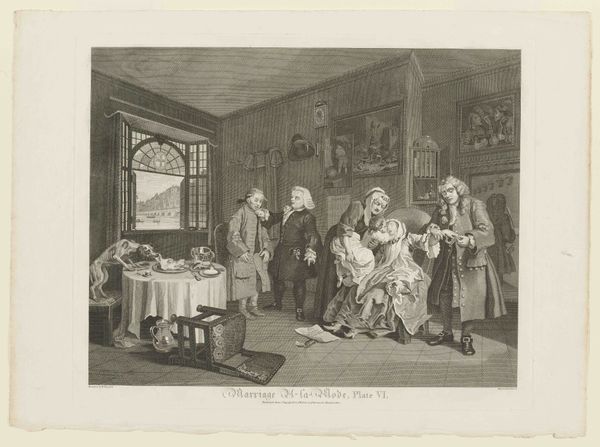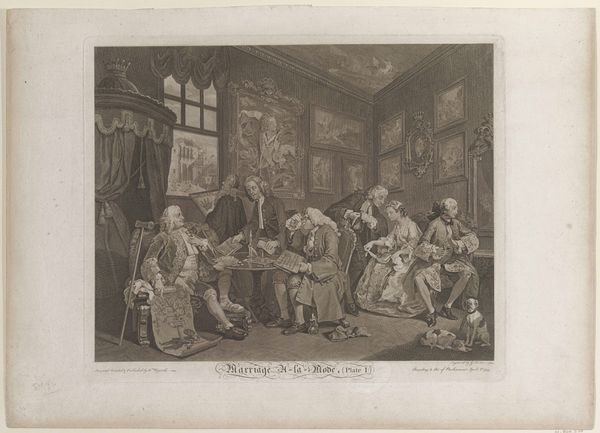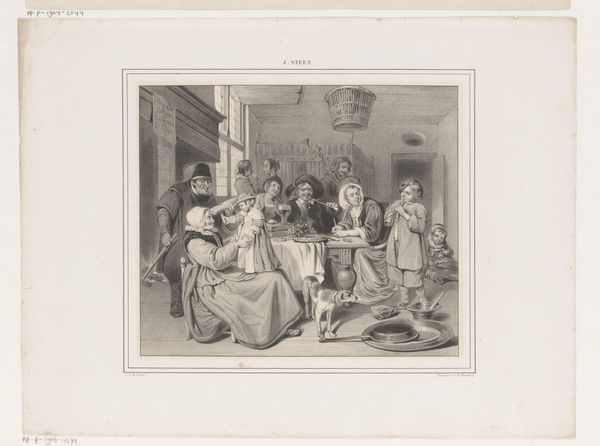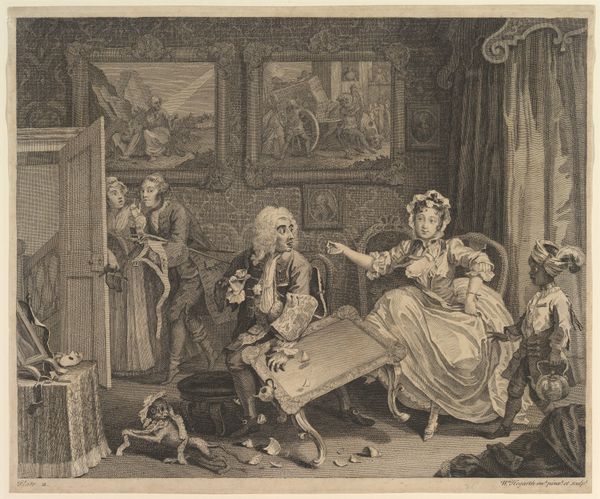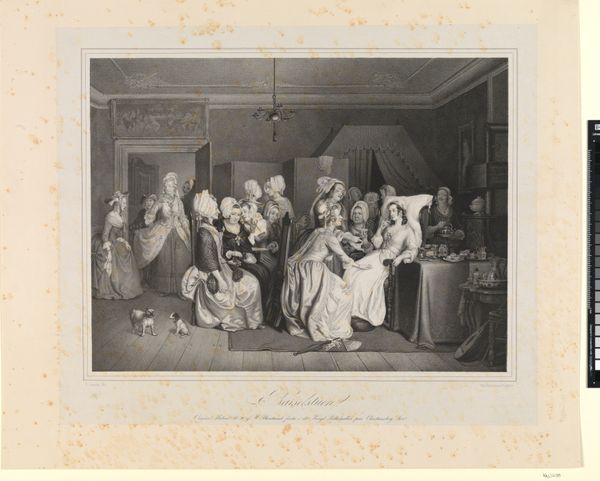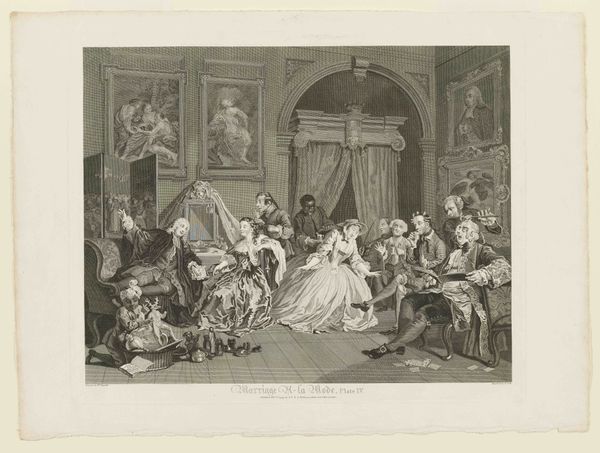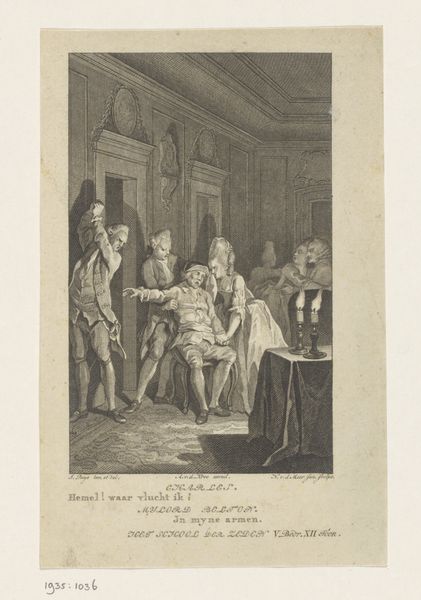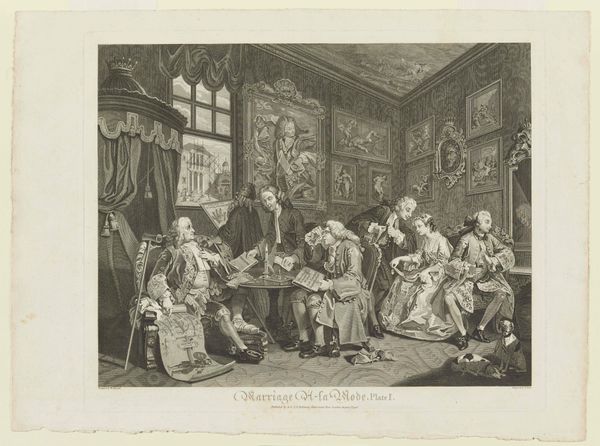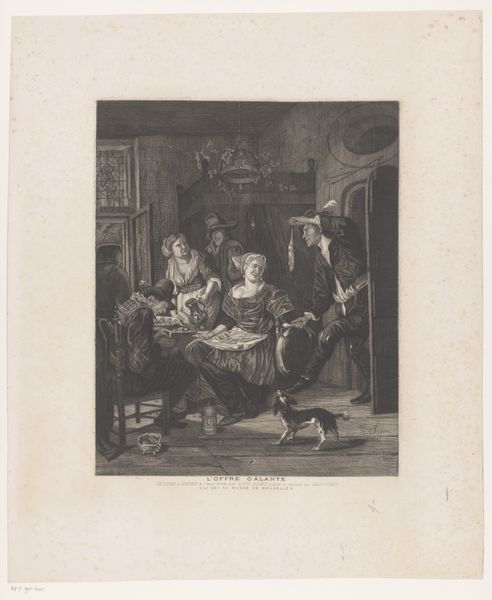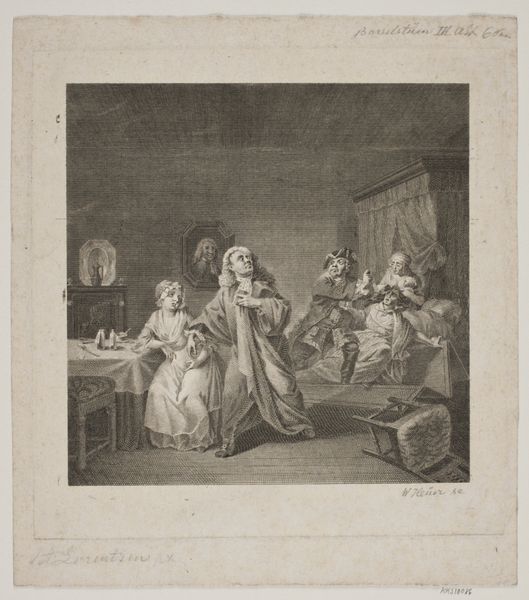
print, engraving
#
narrative-art
#
baroque
# print
#
genre-painting
#
history-painting
#
academic-art
#
engraving
#
realism
Dimensions: 15 1/4 x 18 1/2 in. (38.74 x 46.99 cm) (plate)
Copyright: Public Domain
Editor: This is Plate VI from William Hogarth's *Marriage A-la-Mode* series, created in 1745. It's an engraving, so a print, and depicts quite the dramatic scene! There's such chaos and distress captured; what symbolic meaning do you glean from this work? Curator: Hogarth’s world is thick with meaning! Think of it less as a singular scene and more as a condensation of social anxieties, expressed through carefully constructed visual symbols. Editor: Can you give an example? Curator: Look closely – beyond the swooning woman – at the paintings hanging on the back wall, barely glimpsed. One appears to be a distorted religious scene; the other suggests domestic unrest, their off-kilter positioning tells their own little story reflecting the couple's interiority, do you see it? Editor: Vaguely; but those paintings act almost as secondary narratives. Curator: Precisely! They function as what psychologists call “projective tests.” These little domestic dramas mirrored within Hogarth's drama speak volumes about the state of marriage. And, of course, the dog stealing the food – a classic symbol of appetite and uncontrolled desire. Editor: It all seems to indicate dysfunction, lack of control and the burden of hidden moral failings. Curator: Absolutely, consider also that upturned chair, it evokes emotional turmoil and a world disrupted. It all adds layers to a narrative of marital and moral collapse. A cautionary visual tale. Editor: That’s a lot to unpack; so it’s not just a simple domestic squabble! Curator: Not at all. Hogarth used these characters as archetypes, embedding cultural anxieties and judgements into seemingly simple scenes. He captured the zeitgeist of 18th-century England perfectly! Editor: Thank you, it has given me a different lens through which to look.
Comments
No comments
Be the first to comment and join the conversation on the ultimate creative platform.
